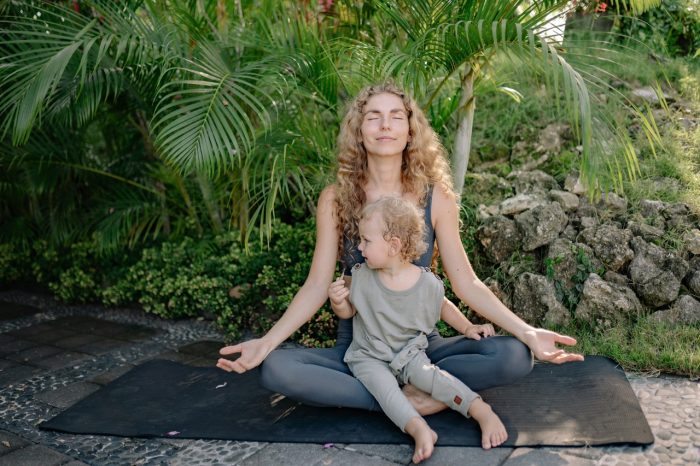I received a bachelor’s degree in 2012 from a Liberal Arts school in Seattle.
My degree is in Liberal Studies with an emphasis in Human Development and Learning, which means I took a lot of classes in child development, discovered how children best learn, and what type of environment we should create for them.
My passion is in children, and I love learning how to teach them best. I taught in Early Childhood Education for many years and prekindergarten was my favorite. I was a Youth Education Director at a Church and taught prayer and meditation for years for students aged three to 10. I strive for children to feel heard and seen, and I believe this stems from being a child who was neither.
In order to graduate, I had to compose a lecture and share it with my cohort and instructors called a Senior Symposium. I chose the topic of “Mindfulness for Children,” and my research included going to a place called, “Creative Dance Center.”
Creative Dance Center was created by a woman named Anne Green Gilbert. Anne believed that children needed movement to meet all of their social-emotional needs. She believed in the importance of children receiving cross-lateral movement, and if children missed a stage in their development, say crawling, she believed it was important that they go back and complete that stage.
Luckily, I had a small child at the time, and so we took part in the classes at the center. There was a time of quiet meditation for mother (or another caregiver) and child. We lay on mats while rainbow flags were displayed around the room, keeping our littles’ attention. It was a calming and serene environment for us to connect with ourselves and our little ones. Anne believed in something called, “Brain Dance,” which leads students through numerous exercises meant to help children move their bodies, mimicking the movement patterns we naturally move through in the first year of life.
This research led me to purchase the “Mind Up” curriculum from Goldie Hawn. This website has resources for parents and caregivers. There are videos that can easily be done at home or at school for educators.
I have led children in yoga in various settings and have loved taking my son to outdoor and indoor yoga classes geared for children. Yoga for children is such a great gift to share with our children and for them to do individually. Learning to breathe, center, and focus on our breath is something I know as an adult I wish I would have learned much earlier.
Sometimes, at-home yoga with kids turns into a giggle fest. That’s okay. It’s the intention that counts. Most importantly, we want our children to witness us doing our breathing, our sitting, our yoga, our mindfulness.
At home, we use the Calm and Headspace app and have just been experimenting with the Tapping solution app. All of these have stories and meditations for children, teaching them to come back to their breath.
No apps, no problem. Set a timer and sit with your little one on a pillow. Play meditation chimes and have them focus on the sound and to let you know when they no longer hear it. Demonstrate how we breathe deeply, placing our hand on our tummy, and watching it rise and fall.
Do some stretching and throw your legs in the air. Make it enjoyable, and most importantly, let this be a time for you and your children to connect. When we are truly connecting with our kids, it doesn’t take a long time. They just need to see us looking at them and focused on them for a short time to feel that connection.
Rebecca Bailey of Conscious Discipline calls this “Joy Juice.”
“Joy Juice is a combination of positive brain chemicals that create joyful feelings literally wiring the brain for impulse control and willingness. Joy juice is made of oxytocin, dopamine, and endorphins. The connections that we build on the outside with others will build neural connections on the inside and give us this joy juice.”
I heard many years ago that it doesn’t take hours and hours of play for our children to feel connected and secure. It can literally be 10 minutes of focused attention. The key is being focused on them and not distracted. (Put the phone away for this time, if possible.)
Modeling mindfulness for our children is really the path that paves the way for them to try it on their own. They see us sitting on our cushion, taking our deep breaths, or listening to our guided meditation, moving our bodies, doing our yoga, and they naturally want to be included.
When I am frustrated or anxious, I state it out loud. I let my child know that I am worried about something and taking a deep breath to calm my body. I state a couple of affirmations, say a little prayer, and go about my business.
I like to say, “I can handle any situation with calm,” or, “I am grateful for everything I have in my life.”
There is a great app called “I Am” that will send new affirmations daily to your phone. It is a great reminder and a great practice.
I don’t pretend like I never get upset, nervous, or afraid. I am honest when I go through these emotions, and I show how I can breathe through tough emotions. I may journal or take a walk or pray, but I am modeling healthy ways to cope with stress, which is what our children need to witness, especially during these times.
We want our children to know that it’s okay to feel angry and sad. It’s okay to have strong emotions. We all have feelings, and feelings are a normal part of life—a normal part of being human. We don’t need to mask strong emotions, but we can work through them, and here is how:
Put your hand on your heart.
Breathe deeply.
Name the emotion: I’m feeling really sad; I’m feeling anxious; I’m feeling mad; I’m feeling worried; I’m feeling lonely; I’m feeling left out; I’m feeling jealous…whatever it may be.
Say an affirmation:
I can do all things through Christ who strengthens me.
I can handle all situations with calmness and clarity.
I don’t have to do this alone, I can reach out and ask for help.
I am safe, I am calm.
These are just some examples, but use something that rings true for you and your child. Create a space of connection and safety—a place of calm.
Many of us adults are running through this life with no coping mechanisms, so we run to things that bring us instant gratification or temporary comfort, but if we learn to self-soothe and teach our children the same, we no longer have to run or stuff strong emotions. We can work through them as they come. We can ask them where they came from, what their root is, work through them, and heal those places in ourselves that have felt like not enough.
We don’t have to panic when big things come our way. We can learn to stay calm and roll with the punches.
Many of us didn’t learn those skills as children and were told to stop crying or we’d get something to cry about. Sometimes, in our family of origin, it wasn’t safe to feel.
We may have felt weak or vulnerable for crying, and it was frowned upon.
Our children need a safe place to express emotions. With us being mindful and using our own mindfulness techniques, it will carry over to our families and children.
So, yes, show your children how to take three deep breaths when angry or upset, hold them, and help them calm, but also do your own inner work, and the ripple effects will be many.
The foundation we lay for our children is imperative to their own well-being. Have you noticed all of the screwed up adults on this planet? I know because I was one of them.
Most of us didn’t receive the loving care or nurturing we needed and deserved as children. I grew up in the don’t-hold-your-child-you-will-spoil-them generation. The generation of “cry it out” and “breast milk is bad.” I had some failed connections.
I’ve had to work hard to find my own little girl inside and connect with her. To let her know she will be heard and validated now. I’ve had to apologize for all of the times I left her alone while I was running and gunning, avoiding feeling at all costs. I left her empty and alone.
It takes time, but reconnecting to our children inside will help us connect with our own children outside.
Adult Children of Alcoholics and Dysfunctional Families have been a great resource for me to learn some tools.
I would love to open a dialogue about mindfulness in children. It is definitely a passion of mine, and I would love to learn more of what has worked for others.
~







Read 25 comments and reply